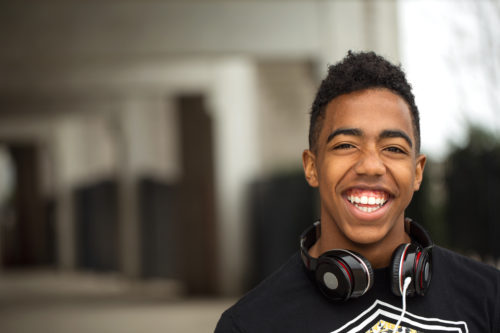Youth leadership is a fairly common phrase. But if you asked most people to describe youth leadership, I think they’d come up a little short. They would focus on how it helps the “smartest” kids with the “highest potential” build a conventionally successful future.
But as a high school teacher and advisor, I’ve seen firsthand how powerful leadership training for students can be when done in a way that speaks to everyone and focuses on becoming a leader from the inside out. It’s just one of the reasons I find the Siegfried Youth Leadership Program® (SYLP) so uniquely powerful.
Over the last few years, I’ve been to several SYLP events. Whenever I discuss it with others or try to demonstrate the importance of leadership for high school students, I generally hear a few of the same questions or statements.
And with that in mind, I wanted to dispel two of the most common “myths” I hear about youth leadership.
Myth #1: Leaders need to be the loudest ones in the room or the ones most involved.
This myth centers around the idea that a successful young leader needs to be the first in their class, the straight-A student, the one who is on the most committees and teams.
When I think about leadership and how it’s relevant to my students, I think of the person who is trying a little harder, who says hello in the hallway, who raises their hand after realizing they have enough confidence to do so, and who partners with the student who isn’t paired up.
I used to think my job was to teach everyone to be louder, to do more, and to make their voice heard. Over the years, however, I’ve seen that leadership takes many forms and has very few limits – and that includes limits on what leaders look like or who they can be.
Myth #2: They’re not interested.
I know it can seem like teenagers aren’t interested in very much or don’t care about leadership, but they do.
My classroom is a very diverse group of kids from all backgrounds and socioeconomic statuses, but one thing they have in common? They all value inclusion. They care about being heard and seen for who they are. And when it comes to many traditional youth leadership programs or trainings, not every kid is included.
But when we make youth leadership about concepts and ideas relevant to everyone (not just the straight-A kids headed directly for college), you should see how interested they become. You should see the spark and how fast it travels.
This is where SYLP excels. SYLP makes it a priority to help young people understand that anybody can be a leader and that individual leadership is about you being in charge of where you want to go – wherever that is.
Embracing and teaching individual leadership
What I think is most important about youth leadership is reinforcing the idea of individual leadership, or being a leader from the inside out. This kind of leadership looks different for everyone, and there aren’t just two roads – there are hundreds!
This is where SYLP differs from many youth leadership programs. It focuses on personal growth and development from an individual experience versus the collective experience. It asks students to think about their short-term and long-term goals, to identify their passions, the people most important to them, and what qualities they would like to embody in their mind and in their spirit. It’s inspiring to see my class put their pens to paper and start to map out their future.
Building and understanding character ethic
For many of my students, SYLP is the first chance they have to begin thinking about their character ethic traits (e.g., ambition, humility, and confidence) and how these traits contribute to their future.
It comes down to self-reflection, a practice that students are not familiar with when learning about leadership.
Most of the leadership that young people hear of is about being the loudest and the first in line, but at SYLP, they have a chance to dig deeper into self-reflection and realize they are in charge of their own path.
When they’re at SYLP, they spend time thinking about how they can find small opportunities to make themselves into their version of a leader. I tell my students all the time that they can make a difference. But like many things, the students need to hear it often and from more than one person. And at SYLP, they hear it from local business leaders and passionate guest speakers. They’ve begun to really see and understand how little things do add up.
More than “just one day”
The impact of SYLP lasts long after our bus pulls away from the event. The kids come back feeling confident, eager, and thoughtful, and I come back feeling reassured that our future is going to be a-okay.
Ultimately, I’ve learned that there are a lot of ways to look at youth leadership. But what I think is most important is that it’s for absolutely every single person out there. And that it’s about so much more than what kids are doing externally — it’s about helping them transform from within so they can begin to make a difference.
As a teacher, I want my students to become good contributing members of society and invested in their future, but I have learned over the years that the best I can give my students is the chance to discover themselves and realize all their potential in the outside world.
If that happens in a small way, I have hopefully done my job as an educator and advisor.











